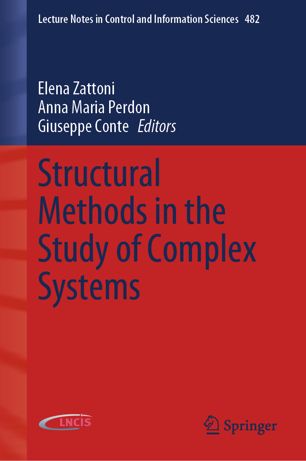

Most ebook files are in PDF format, so you can easily read them using various software such as Foxit Reader or directly on the Google Chrome browser.
Some ebook files are released by publishers in other formats such as .awz, .mobi, .epub, .fb2, etc. You may need to install specific software to read these formats on mobile/PC, such as Calibre.
Please read the tutorial at this link. https://ebooknice.com/page/post?id=faq
We offer FREE conversion to the popular formats you request; however, this may take some time. Therefore, right after payment, please email us, and we will try to provide the service as quickly as possible.
For some exceptional file formats or broken links (if any), please refrain from opening any disputes. Instead, email us first, and we will try to assist within a maximum of 6 hours.
EbookNice Team

Status:
Available4.4
14 reviewsStructural Methods in the Study of Complex Systems helps the reader respond to the challenge of mastering complexity in systems and control. The book details the fundamental control problems arising from complex dynamical systems and shows how they can be tackled effectively by means of methods developed from graph theory, differential algebra and geometric approaches. These “structural methods” produce abstractions that fit a wide variety of applications by taking advantage of their intrinsic focus on the essential characteristics of dynamical systems, their geometric perspective and visual representation, and their algebraic formalization and ability to generate algorithmic frameworks to complement the theoretical treatment. The original work and latest achievements of the contributors, expanding on material presented at a workshop organized to coincide with the 2018 European Control Conference will assist systems and control scientists interested in developing theoretical and computational tools to solve analysis and synthesis problems involving complex dynamical systems. The contributions provide a comprehensive picture of available results along with a stimulating view of possible directions for future investigations in the field. Emphasis is placed on methods with solid computational background and on specific engineering applications so that readers from both theoretical and practical backgrounds will find this collection of use.